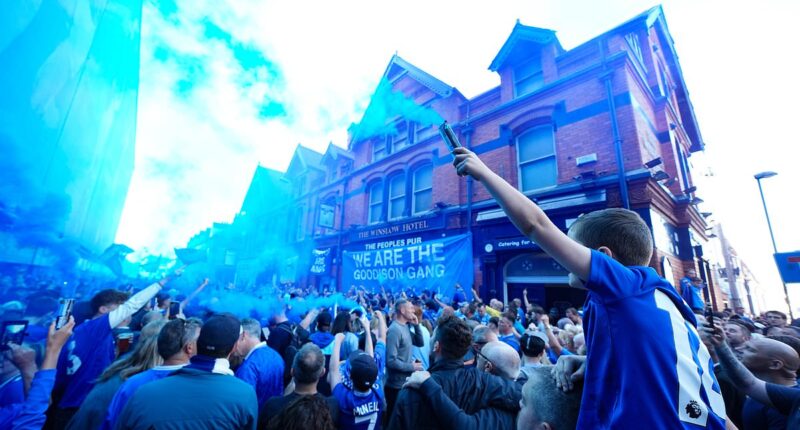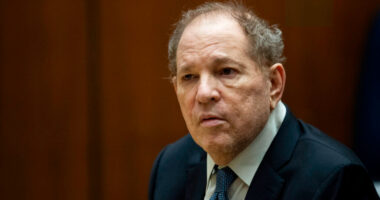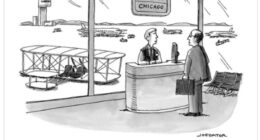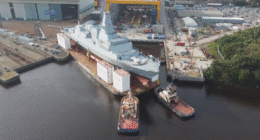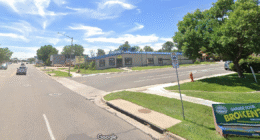The blue side of Liverpool turned up in full ahead of Everton’s final game at Goodison Park on Sunday – their home of 133 years.
Starting next season, Everton’s women’s team will permanently play their matches at Goodison Park. Meanwhile, the men’s team will be moving to the newly constructed Hill Dickinson Stadium located at Bramley-Moore Dock.
It’s a fate befitting a ground that has staged World Cup knockout matches, thrilling European ties and a number of title-winning celebrations.
The Toffees face Southampton at 12pm on Sunday afternoon, but that didn’t stop their fans from getting the party started hours earlier.
Before the shift, fans came together in large numbers at ‘The People’s Pub’ near ‘The Winslow Hotel’, situated across the stadium with Goodison Road in between.
Some Evertonians were spotted as early as 8.14am getting the drinks flowing, with flares being set off not long after.

Everton fans flooded the streets ahead of the club’s final match at Goodison Park on Sunday

Fans took to local pubs a stunning three and a half hours before kick-off against Southampton

Pictured: The queue at 8.14am outside ‘The People’s Pub’, located opposite Goodison Park
Everton captain Jordan Pickford admitted that Sunday’s clash is far from a normal game – for any associated with the club.
‘We’ll be playing for the memory of winning the last home game at Goodison,’ he acknowledges. ‘So there will probably be added pressure.’
The upcoming midday match against the Saints is expected to be sentimental, as numerous former Everton players have been invited to attend, and supporters are planning to line the streets to welcome the team bus.
Everton come into Sunday’s game 13th in the table, while their opponents have long been relegated and sit last.
After 30 years without silverware, Everton hope to flourish in their new ground at Bramley-Moore dock.
The 52,888-seater location will be known as the Hill Dickinson Stadium in a multi-year naming rights deal that will secure the club a healthy sum of money.
Hill Dickinson is a commercial law firm spanning 11 offices which was founded in 1810.
The Toffees announced the news on Friday evening, writing in a statement: ‘Everton Football Club is proud to announce Hill Dickinson as the official naming rights partner for the Club’s new stadium at Bramley-Moore Dock, in a long-term agreement that will see the iconic venue named Hill Dickinson Stadium.

Goodison Park has been home to Everton’s men’s team for 133 years, but will host their women’s team from next season onwards

Everton come into Sunday’s game in 13th place, while their opponents are relegated and last

The game against Southampton will be Everton’s 2791st played at their home ground in history

Everton have won 1538 games in all competitions, scored 5370 and conceded 3028 goals at Goodison Park

The Toffees will move into their newly built Hill Dickinson Stadium on Bramley-Moore Dock

The ground will hold up to 52,888 fans – the seventh-most of any team in the Premier League
‘This transformational partnership represents one of the largest stadium naming rights deals in Europe. It brings together two Liverpool institutions, united by a global outlook, a deep commitment to the city of Liverpool, and a shared history that dates back to the very founding of Everton in 1878.
‘Founded in 1810, Hill Dickinson is a commercial law firm spanning 11 offices across the UK, Europe and Asia. Hill Dickinson’s international growth has been underpinned by the hallmarks that also define Everton – with both organisations striving for excellence, supporting their local communities and delivering long-term positive impacts.
‘Set to officially open in August this year, the 52,888-capacity Hill Dickinson Stadium will be a new home for Evertonians and a year-round destination for major sport, music, entertainment, business and cultural events.
‘As the centrepiece of the wider regeneration of North Liverpool, Hill Dickinson Stadium will deliver thousands of jobs, attract significant inward investment, and serve as a catalyst for long-term social and economic growth in the city.’
